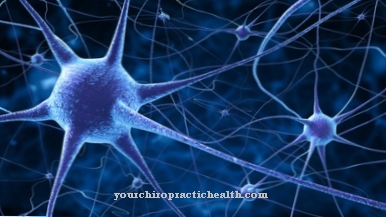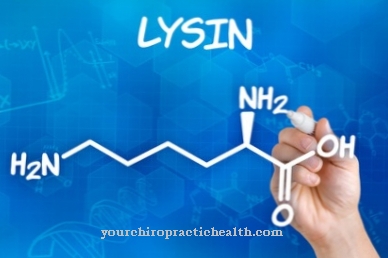Cell division takes place in every living being in the form of mitotic or meiotic cell division. Its purpose is the renewal of the body's substance and the production of reproductive cells.
What is cell division?

There are two types of cell division: the mitotic and the meiotic form. Each cell initially consists of a double strand of DNA, which means that it can divide and form the other half.
Mitotic cell division occurs in every cell type in the human body except for the reproductive cells. It has the purpose of renewing the substance of the body. Mitotic cell division first splits the DNA strand, then the cell nucleus and the cell itself. Organelles form anew, the DNA replicates the missing partial strand and two new ones have emerged from one cell.
Meiotic cell division skips the step of replicating half the DNA strand so that these cells only contain half of the DNA. In this way they can fuse with another cell and create a living being with the combined DNA of two cells. Meiotic cell division only takes place in reproductive cells, i.e. in egg cells and sperm. All other division processes are mitotic.
Function & task
Cell division has two core tasks in the human body: renewal of body substance and reproduction. Mitotic cell division is used to renew the body's substance. Two completely identical, new cells are created from one cell. How often a cell divides depends on its type. Some cells divide every few hours, others only every few days or much longer.
The new cells that arise from mitotic cell division are also used to close wounds or to grow organs and tissues, which is particularly important in children. According to this, cell division proceeds faster in children than in adults, and in babies even much faster than in children.
Mitotic cell division is crucial for the growth process, because the faster cells divide, the more body substance there is and the more growth can take place.
Meiotic cell division, which is important for the production of reproductive cells, is also important. The process starts from an ordinary cell in the body that contains twice the DNA. However, the divided DNA no longer produces the "missing" half, but the cell divides and each new cell only contains half the DNA set.
The shape of the new cells also differs because egg cells and sperm have different properties than the cell from which they originate. Initially, they do not divide further because they lack the other half of the DNA strand. They only get this back through fertilization, after which they can divide again. Due to fertilization, however, they no longer correspond to the DNA set of just one parent, but already represent a completely new living being.
Illnesses & ailments
Cell division is a highly complex process which can also cause problems. External influences such as radioactive radiation or the presence of chemical substances can already have a negative impact on the cleavage of the DNA. This would mean that they would not be properly divided or put back together incorrectly, which would either cause the affected cells to die or mutate.
They can trigger diseases such as cancer, as cell division and the function of the degenerate cells in this form is not intended by the body and usually takes place exponentially. The result is a tumor that can be benign or malignant, but in any case is a serious disease.
Cell division slows down with age. This can be seen in aging processes in various places, for example on the skin. New skin cells are no longer reproduced as quickly, the skin appears less elastic and youthful. Changes in cell division also lead to many other aging processes, which are normal but can lead to various complaints and problems that require treatment.
Errors in cell division in the meiotic form are risky, as this creates reproductive cells and the "correctness" of the egg cell and sperm is crucial for healthy children. If there is an error in the DNA strand of one of these two cells, this is transferred to the child and forms its complete DNA set.
More or less serious hereditary diseases develop, for which there is no cure, as a healthy DNA strand would be required. If the mistake is too severe, the pregnant woman may have a loss very early within the first few weeks. If this does not happen, a child is born with a congenital disease. According to recent research, misdirected signals from cell division could also lead to other serious diseases, one of which is Parkinson's.
Cell division is always a complex process, whether it is mitotic or meiotic. The older the person, the more likely it becomes that an error in DNA division and replication occurs at one point during everyday cell division. This can lead to the formation of pathological cells that can trigger a number of disease states.



























